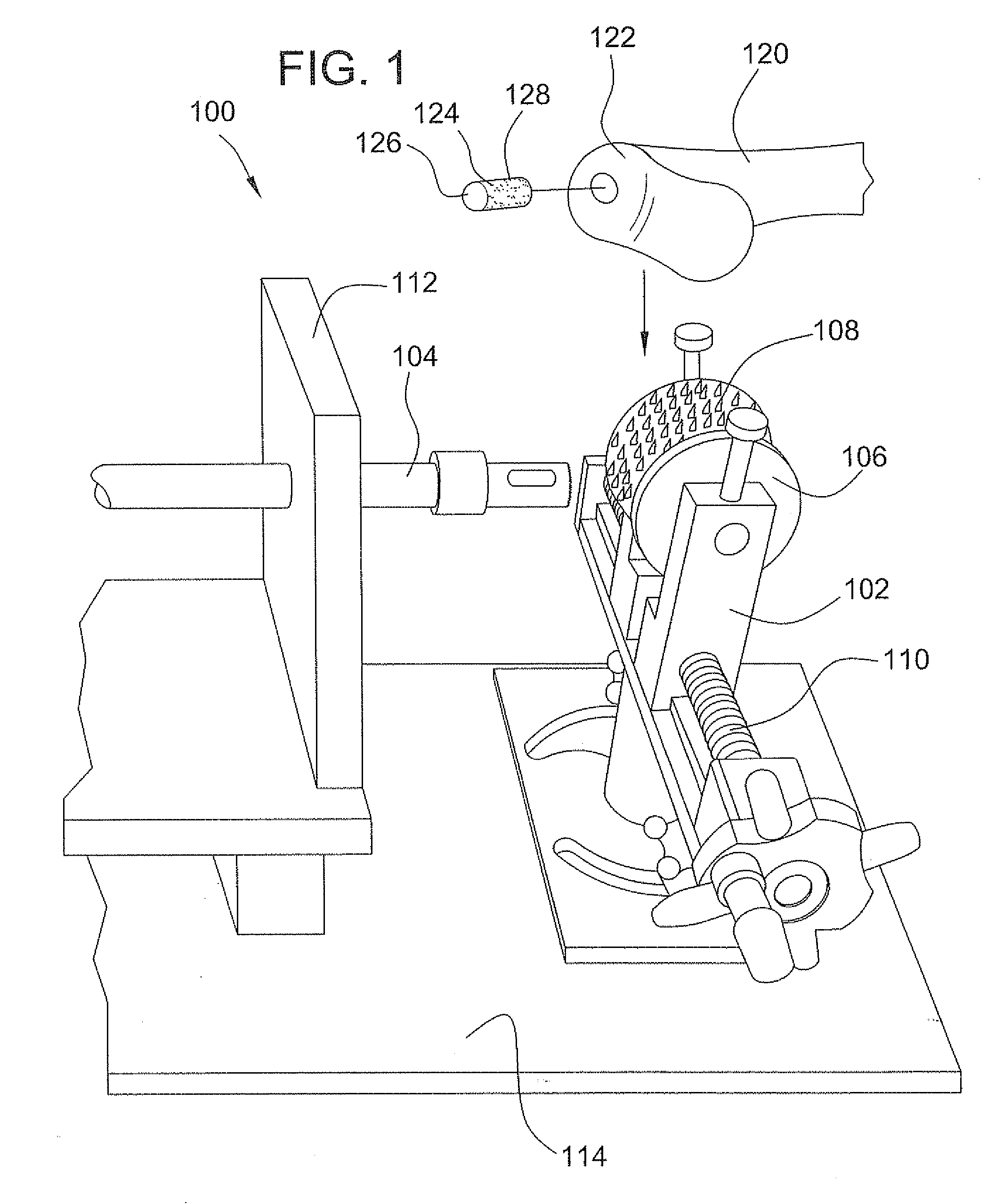Osteochondral allografts
a technology of allografts and allografts, which is applied in the field of allografts, can solve the problems of difficult physical attachment and secure attachment of allograft plugs to the recipient site, cartilage damage, and difficulty in repairing cartilage damag
- Summary
- Abstract
- Description
- Claims
- Application Information
AI Technical Summary
Benefits of technology
Problems solved by technology
Method used
Image
Examples
Embodiment Construction
[0032] Now referring to the drawings, wherein like reference numbers refer to like elements, there is illustrated various processes and instruments for preparing and transplanting an osteochondral allograft in accordance with the various embodiments of the invention. Referring first to FIG. 1, there is shown a device 100 suitable for cutting and forming a cylindrically shaped allograft plug 124 from a donor bone 120 in accordance with one aspect of the invention. The device 100 itself includes a clamp assembly 102 and a tubular crown saw 104. The clamp assembly 102 includes two vertically extending clamp pads 106, 108, that can be moved with respect to each other by rotation of a linear screw mechanism 110. The crown saw 104 is directed towards and linearly movable with respect to the clamp assembly 102. To align the clamp assembly 102 and crown saw 104, the crown saw can pass through a vertical alignment plate 112 joined to a base 114 onto which the clamp assembly is also mounted. ...
PUM
 Login to View More
Login to View More Abstract
Description
Claims
Application Information
 Login to View More
Login to View More - R&D
- Intellectual Property
- Life Sciences
- Materials
- Tech Scout
- Unparalleled Data Quality
- Higher Quality Content
- 60% Fewer Hallucinations
Browse by: Latest US Patents, China's latest patents, Technical Efficacy Thesaurus, Application Domain, Technology Topic, Popular Technical Reports.
© 2025 PatSnap. All rights reserved.Legal|Privacy policy|Modern Slavery Act Transparency Statement|Sitemap|About US| Contact US: help@patsnap.com



